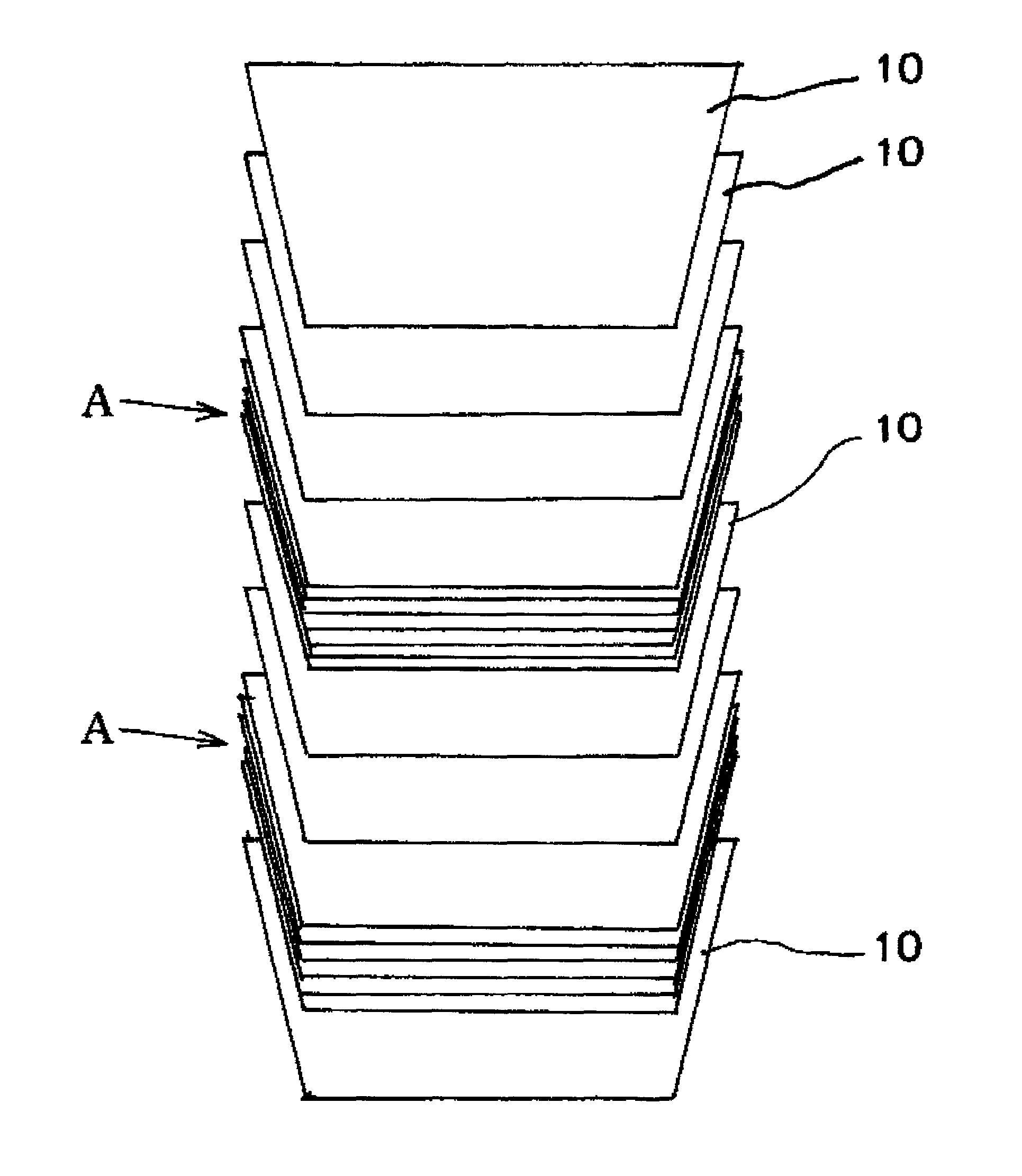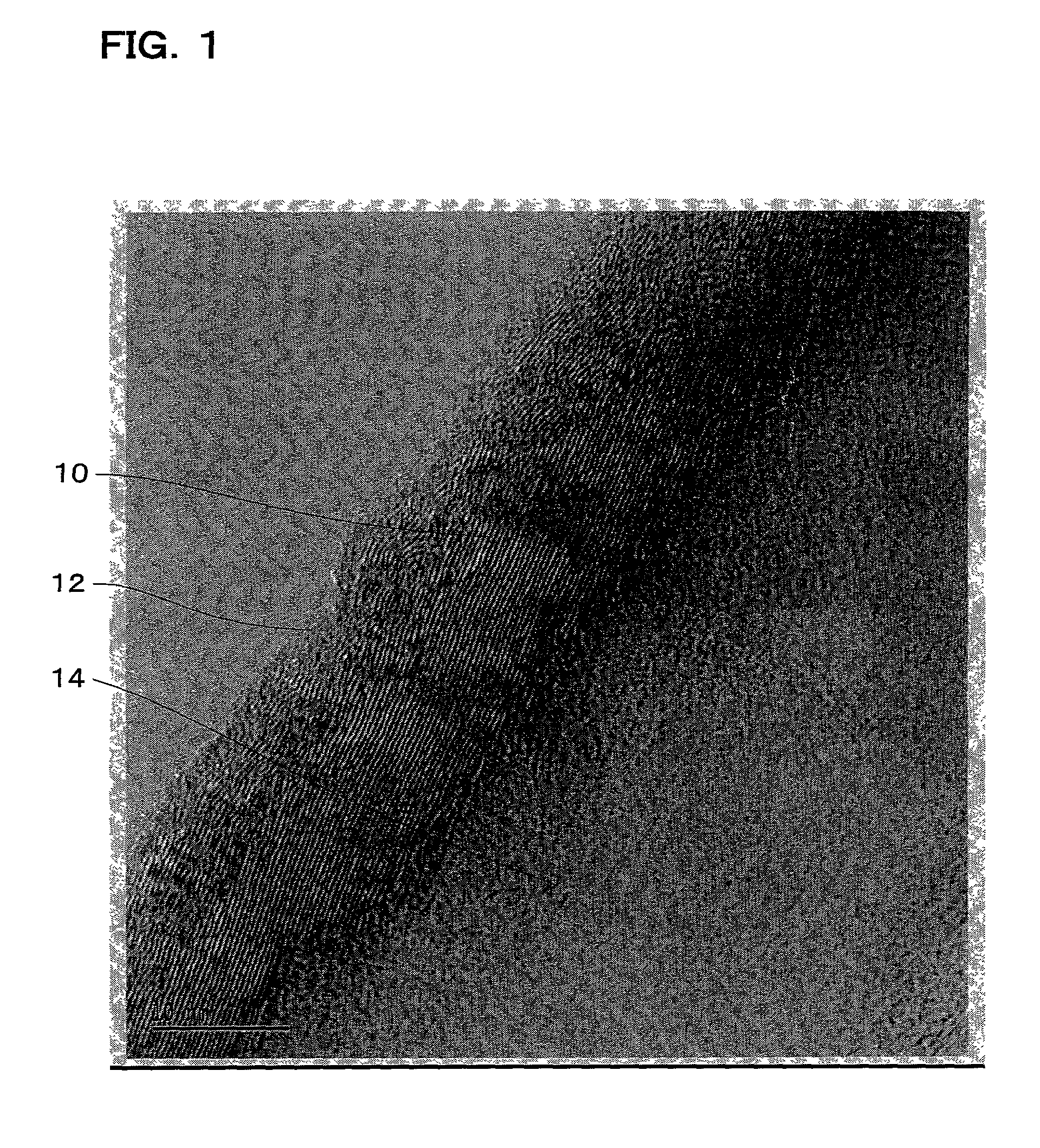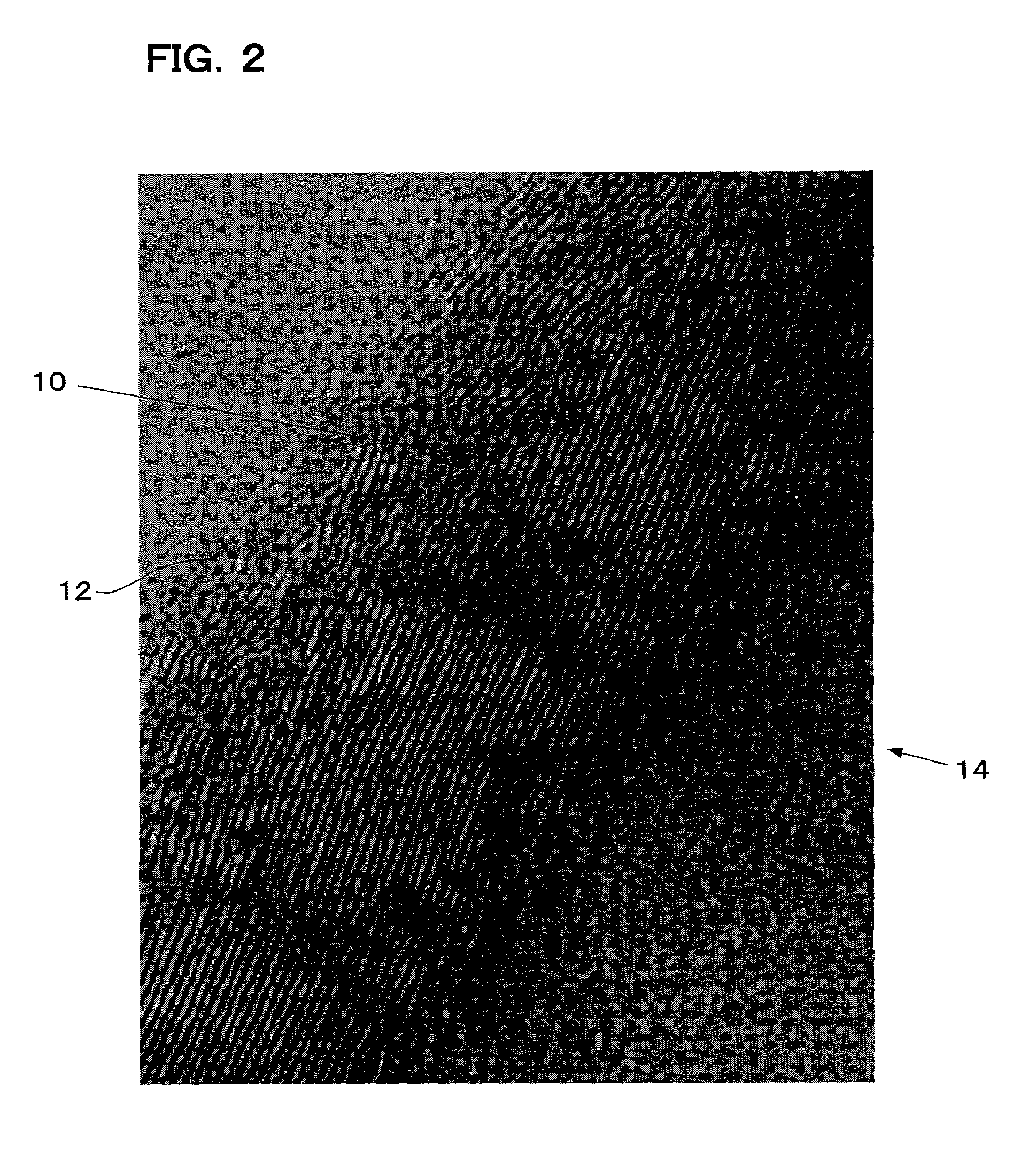Expanded carbon fiber product and composite using the same
a technology of expanded carbon fiber and composites, which is applied in the direction of transportation and packaging, synthetic resin layered products, crystal growth processes, etc., can solve the problems of difficult to form a structure similar to that of expanded graphite, and achieve the effects of increasing porosity, good affinity to carbon fiber, and high activity
- Summary
- Abstract
- Description
- Claims
- Application Information
AI Technical Summary
Benefits of technology
Problems solved by technology
Method used
Image
Examples
Embodiment Construction
[0035]One embodiment of the present invention is described below in detail with reference to the drawings.
[0036]A vapor grown carbon fiber is a short fiber in which carbon obtained by pyrolysis of hydrocarbons such as benzene or methane at a temperature of about 700° C. to 1000° C. is grown with a catalyst particle such as an ultra-fine iron particle or nickel as a nucleus.
[0037]Carbon fibers generally have a structure in which the hexagonal carbon layers are grown concentrically or a structure in which the hexagonal carbon layers are grown in an axial direction of the fiber. However, depending upon the vapor growth conditions such as catalyst, temperature range, and flow rate, carbon fibers may have a herring-bone structure in which the stacked hexagonal carbon layers are tilted with respect to the fiber axis at a specific angle.
[0038]Carbon fibers with a herring-bone structure generally have a structure in which a number of hexagonal carbon layers in the shape of a cup having a bo...
PUM
| Property | Measurement | Unit |
|---|---|---|
| Temperature | aaaaa | aaaaa |
| Temperature | aaaaa | aaaaa |
| Density | aaaaa | aaaaa |
Abstract
Description
Claims
Application Information
 Login to View More
Login to View More - R&D
- Intellectual Property
- Life Sciences
- Materials
- Tech Scout
- Unparalleled Data Quality
- Higher Quality Content
- 60% Fewer Hallucinations
Browse by: Latest US Patents, China's latest patents, Technical Efficacy Thesaurus, Application Domain, Technology Topic, Popular Technical Reports.
© 2025 PatSnap. All rights reserved.Legal|Privacy policy|Modern Slavery Act Transparency Statement|Sitemap|About US| Contact US: help@patsnap.com



